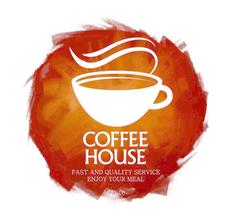Characteristic taste and flavor of Salvadoran coffee beans describe the producing area of grinding scale varieties
Characteristic taste and flavor of Salvadoran coffee beans describe the producing area of grinding scale varieties
El Salvador Finca Himalaya
[country]: El Salvador
[manor]: Himalayan Manor
[producing area]: Santa Ana
[altitude]: 1580 to 1720 m
[treatment]: half-sun
[variety]: red bourbon, Tibika
[processing plant]: El Divisadero
[flavor]: plum, brown sugar, red wine acidity
El Salvador, the Kuskabapa region is rich in coffee beans are the best, its weight is slightly light, aromatic, pure, slightly sour. Like Guatemala and Costa Rica, coffee in El Salvador is graded according to altitude, and the higher the altitude, the better the coffee. The best brand is Pip, whose quality has been recognized by the American Organic Certification Society. Another rare coffee is Parkmara, a hybrid of Pacas coffee and Marago Rippi coffee, best produced in western El Salvador, adjacent to Santa Ana, which is close to the border with Guatemala. Parkmara coffee is full-grained, but not very fragrant
In the early 1990s, guerrilla warfare greatly damaged the country's national economy, reducing coffee production from 3.5 million bags in the early 1970s to 2.5 million bags in 1990-1991. The eastern part of the country was most affected by guerrilla warfare, and many farmers and workers were forced to leave the manor. The shortage of funds has led to a sharp drop in coffee production, from 1200 kg per hectare in the past to less than 900kg per hectare today.
In addition, the government imposed an additional 15% tariff on exported coffee in 1986, that is, an additional 15% in addition to the existing 30% tax. Taxes, together with unfavorable exchange rates, have greatly reduced the export of coffee and the quality of coffee.
The government finally realized the great role of coffee in the national economy, such as solving employment, earning foreign exchange and developing agricultural production, so it privatized part of the coffee export industry in 1990, hoping to increase the income rate of coffee in the export market.

Important Notice :
前街咖啡 FrontStreet Coffee has moved to new addredd:
FrontStreet Coffee Address: 315,Donghua East Road,GuangZhou
Tel:020 38364473
- Prev

Flavor characteristics of Yejia Coffee Flavor treatment Variety Regional Grinding scale
The flavor characteristics of Yejia Coffee Coffee are ground and scaled in the producing area. The beans are roasted intensively and brewed by hand and siphon. When you grind the beans, you can smell the aroma of sun-dried fruit, and the sweetness is obvious. There is also the citrus and jasmine fragrance of Yega Snow Coffee, which tastes like the three-in-one flavor of Harald, Yemeni Mocha and Yega Snow Coffee Water! Ye Jia Xuefei's coffee
- Next

Flavor description of Colombian Rosa coffee beans taste varieties treated by grinding scale
Flavor description of Colombian Rose Summer Coffee beans the suitable climate in Colombia provides a real natural pasture for coffee. Coffee trees in Colombia are mainly cultivated in the Andes, on steep slopes about 1300 meters above sea level, where the annual temperature is about 18 degrees Celsius, annual rainfall is 2000 to 3000 millimeters, and latitude 1-11.
Related
- Detailed explanation of Jadeite planting Land in Panamanian Jadeite Manor introduction to the grading system of Jadeite competitive bidding, Red bid, Green bid and Rose Summer
- Story of Coffee planting in Brenka region of Costa Rica Stonehenge Manor anaerobic heavy honey treatment of flavor mouth
- What's on the barrel of Blue Mountain Coffee beans?
- Can American coffee also pull flowers? How to use hot American style to pull out a good-looking pattern?
- Can you make a cold extract with coffee beans? What is the right proportion for cold-extracted coffee formula?
- Indonesian PWN Gold Mandrine Coffee Origin Features Flavor How to Chong? Mandolin coffee is American.
- A brief introduction to the flavor characteristics of Brazilian yellow bourbon coffee beans
- What is the effect of different water quality on the flavor of cold-extracted coffee? What kind of water is best for brewing coffee?
- Why do you think of Rose Summer whenever you mention Panamanian coffee?
- Introduction to the characteristics of authentic blue mountain coffee bean producing areas? What is the CIB Coffee Authority in Jamaica?

